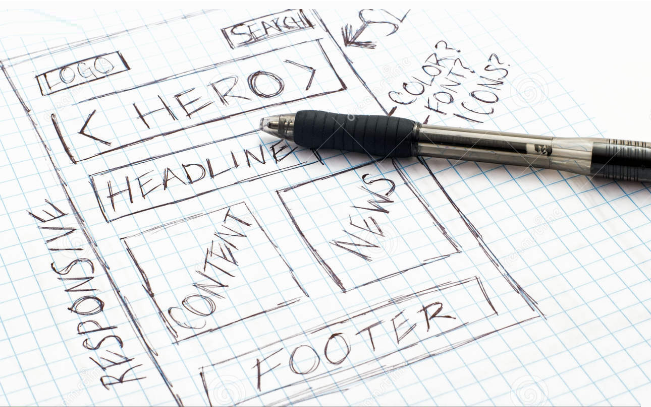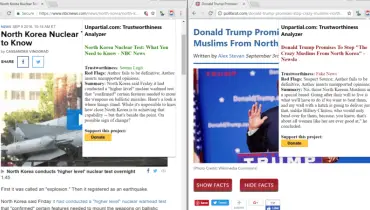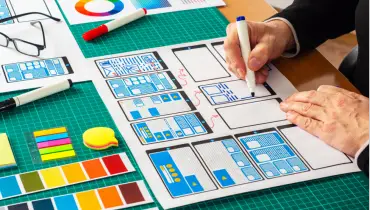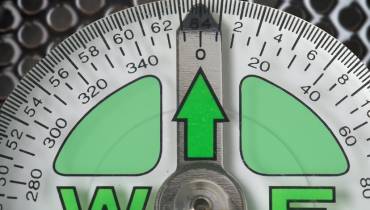Factors to Consider When Re-Designing a Business Website

The internet is an essential marketing tool for any business today. It has become an integral part of our lives. We use it to find information, buy products or services online. It also provides us with many opportunities to market ourselves and our businesses.
However, if you are not using your website correctly, you may miss out on customers your site could have otherwise attracted over the internet. If this happens, then you’ll lose money because people do not purchase from shaky companies and sites they don’t trust.
So, you need to look at your website design and ensure it is optimized for conversion. Sometimes, this may call for a website re-design or complete overhaul to improve the site.
When designing or re-designing your company website, make sure it meets these key things:
1. Make Sure Your Site Is Mobile-Friendly
If you want more traffic to come to your site, you should keep it in mind that when designing your website it needs to be mobile-friendly.
That means all website pages must fit within mobile device viewports for responsive experiences and load quickly so that users can easily navigate through the site without problems or having to wait too long.
Also, remove unnecessary clutter such as ads and popups which might slow down the site and browsing experience. In addition, make sure that images used on your website are optimized for smartphones and tablets.
You can check whether your site is mobile-friendly using Google’s mobile-friendly test tool.
2. Ensure All Pages Load Quickly
Another way (alluded to in the first point) to increase conversions and visitors to your website is to ensure that every page loads fast after designing or re-designing your site.
If someone visits your website homepage, they expect to see some content right away. Make sure that each content page contains at least a few paragraphs of text or relevant visual content that loads fast within three seconds. That helps to retain readers and encourages them to click around and engage with more content on the site.
Besides that, avoid uploading large files like flash animations or video clips to your site. Heavy files take up space and can cause problems when trying to access them. Instead, opt for simple HTML5 code that loads faster and increases website speed scores.
3. Use Keywords Appropriately
Another factor to consider that affects user experience and how much traffic comes to your site is choosing keywords wisely. When doing keyword research, include words that describe what your product does best or what your business wants to be known for.
Avoid including generic terms such as "business" or "services" since those don't tell anyone anything about your brand. Instead, choose specific phrases that relate directly to your niche; that is, try to include words that relate directly to what you sell or offer.
For instance, if you run a restaurant in Chicago, don't just write general posts about "how to cook chicken wings," but rather something specific to food preparation in Chicago, if you want to rank well for local searches.
Similarly, if you own a clothes store, don't just talk about fashion trends in general that many other brands are talking about and have higher competition. Instead, you can focus on specific clothing styles that your site is more likely to rank well for.
Doing that increases your odds of getting better results in seach engines than merely writing generic posts about topics unrelated to your niche.
4. Include Social Media Links
Social media platforms such as Facebook, Twitter, LinkedIn, and Instagram play a key role in promoting businesses these days. People often share interesting posts via social media, so add those social media links/buttons when designing or re-designing your website to get targeted social media traffic to your site.
Moreover, designing your site to include social media links/buttons on your site and posting valuable resources from your site to social media networks helps bolster relationships between brands and their consumers and fans.
That means you can gain valuable leads on social media and market insights into consumer behavior, as well as ways to improve your customer service.
5. Create Quality Content and Display It Well

The other factor to consider in website development or re-design involves creating quality content as a foundation of your SEO strategy for ranking high in search engines.
Depending on your niche, website visitors may not be interested in reading lengthy blog posts. In that case, create short informative pieces that deliver immediate value. The key for any content strategy is to give visitors reasons to come back and buy from you.
Make sure, therefore, that your website content is unique, informative, and not available everywhere online. To achieve that, it may help to have multiple authors who contribute different types of unique content on your site.
Equally important is your content must be presented and displayed well on your site. This will make it easier for users to read and find what they are looking for on your site.
6. Optimize Your Site for Search Engine Crawling
Search engine optimization (SEO) also plays a vital role in boosting the visibility of your site on major search engines like Google. That means SEO should be considered a priority when developing or re-designing your website.
To optimize your site for SEO and help seach engine crawlers or bots access your site effectively for proper indexing, follow these specific guidelines:
- Make sure website fonts, text sizes, line height, and background colors are right for screen readers – that means black text on a white background and an accessible font that's at least 16 pixels, or 12 points is best for readability.
- Write original content that search engine bots can crawl, meaning avoid using iFrames to display content. Also do not copy-paste/plagiarize material from other sources.
- Design URLs for search friendliness – that means URLs that are simple, easy to read, and include keywords that describe the content on a web page.
- Use high-quality images and image Alt attributes.
- Provide easy website navigation and clear calls-to-action.
- Ensure there are no broken links on your website.
- Block pages you don't want search engines to index, for example, using robots.txt file.
Basically, ensure your website design focuses on providing great user experience.
7. Add Video Slots On the Site
Video is another excellent way to increase engagement rates on a website. For example, designing your website to include explainer videos prominently displayed on the site helps visitors understand complex concepts without having to read long paragraphs of text.
Additionally, videos allow viewers to watch at their convenience. Videos make learning fun and engaging, while passing your brand message fast. So, when designing a new layout for your website, consider adding some videos as well.
8. Build Effective Landing Pages
Landing pages are web pages explicitly designed to convert prospects into paying customers. When done correctly, landing pages can generate up to 30% higher conversion rates than standard home pages.
There are two main ways to build a successful landing page:
- Add a lead magnet - Lead magnets are freebies that entice prospective buyers to sign up for your newsletter or opt-in form. Examples include eBooks, white papers, cheat sheets, and checklists.
- Offer a discount - Discount coupons work well as lead magnets because they offer immediate benefits. But remember to avoid offering too much of a good thing. Make sure your offer is not overkill!
9. Add Call-to-Action Buttons
A call-to-action (CTA) button instructs visitors what action you want them to take immediately when they view your website page. For example, if you want them to purchase something on your site, you can display "Buy Now" or "Add to Cart" buttons for them to click on and take the action.
However, don't place too many CTAs on a single webpage. Instead, add them strategically throughout your site so that every visitor sees one while browsing through various sections. That is a mark of good website design.
In Conclusion
Designing your website can take time, considering all the things you need to consider and take care of. But good website design pays off in the end. It will increase brand visibility, customer retention, conversions, sales, and users’ satisfaction on your site.
That will ultimately boost your brand reputation and help your business succeed.




















